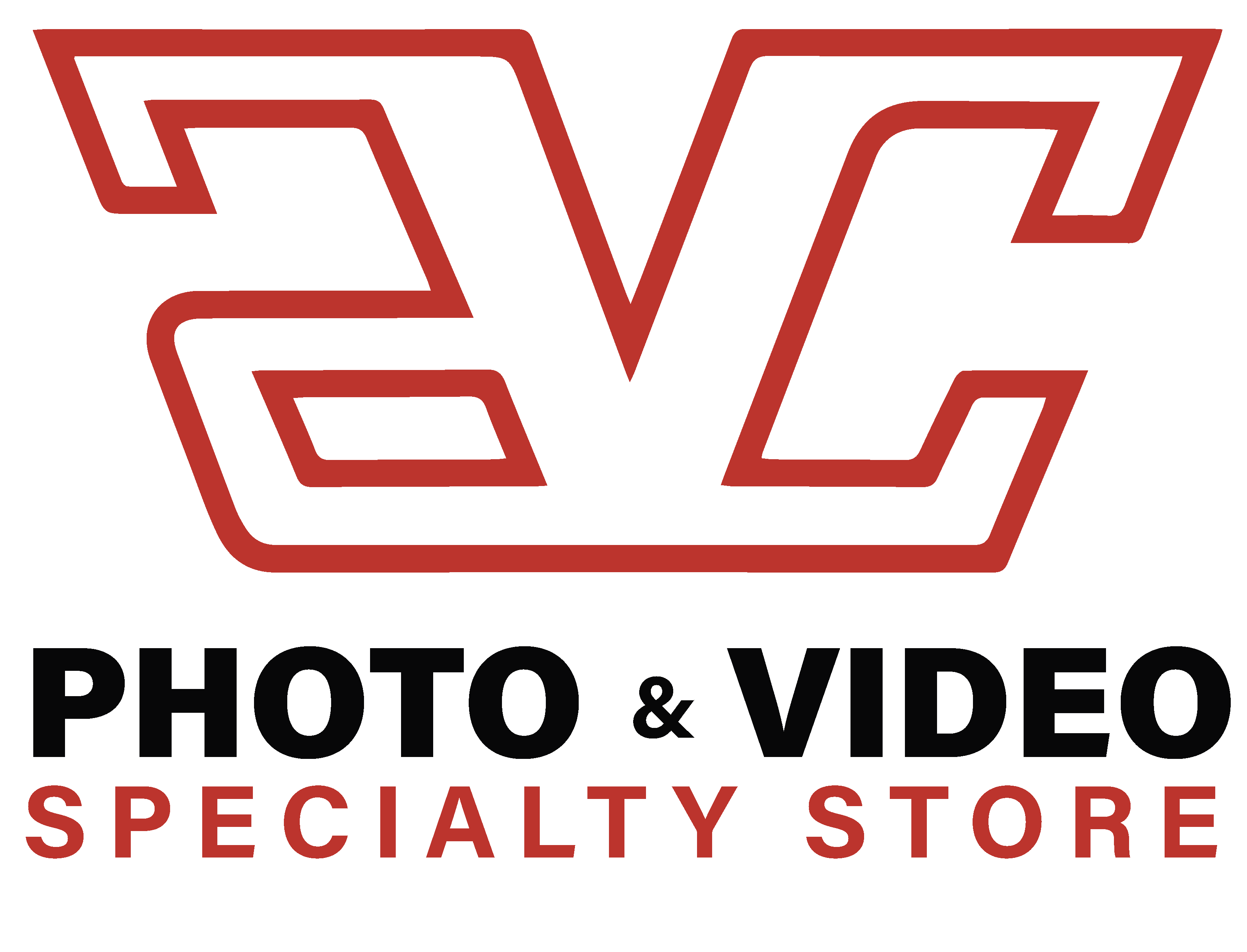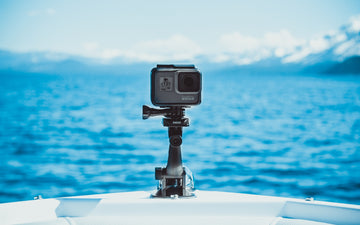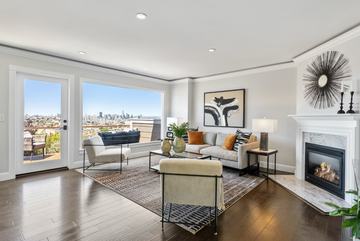What is Film Photography? A Complete Guide!
Nov 16, 2023

In today's world, it's common for most people to have a digital camera right in their pocket, often in the form of a smartphone. However, even in our digital age, there are numerous advantages to embracing the traditional art of capturing and processing images through film. Here, you'll discover a comprehensive guide to help you begin your journey into the captivating area of film photography.
In this blog post, you will learn what film photography is, how film photography works, how to shoot with film, and also about 35mm film.
What is Film Photography?
Film photography is a way of taking pictures using rolls or sheets of a light-sensitive material called film. The film records images when exposed to light, and this process captures photographs on a physical medium. It's a traditional method of photography that predates digital technology, and it involves various steps like developing and printing the images. Film photography offers a unique and tangible way to create and preserve visual memories.
How Does Film Photography Work?
- Film photography uses special film strips that capture pictures when exposed to light.
- When you take a photo with a film camera, it briefly shows the film to the picture through the camera lens.
- This process creates an image on the film, which can later be developed into photographs.
How to Shoot with Film?
- Load a roll of film into your camera and make sure it's set up properly.
- When you want to take a photo, look through the camera's viewfinder and focus on your subject.
- Press the camera's shutter button to capture the image on the film.
Below are a few more things to consider when you are trying to shoot with film:
Master Your Camera Settings: Film photography relies on manual settings. You must understand how shutter speed, aperture, and ISO work together. Shutter speed controls how long the film is exposed to light, aperture affects how much light enters the camera, and ISO sets the film's sensitivity to light.
Prepare in Advance: With film, you have a limited number of shots on each roll. If you're shooting, especially on a trip, make sure to bring extra film rolls. It's also helpful to record your camera settings for each shot in a journal.
Learn from Mistakes: Expect to make mistakes in analog photography. Sometimes, those mistakes turn into something beautiful. For instance, a camera malfunction can lead to a series of unique and unexpected photos. Understanding how the mistakes happened can help you appreciate their charm.
In conclusion, learning the technical aspects of photography and accepting the quirks can lead to some amazing results.
A film camera and a digital camera are two different types of cameras. Here are the key differences between them:
- Capturing Images:
- Film Photography: In film photography, you use analog cameras that rely on physical film to record images.
-
Digital Photography: Digital cameras capture images digitally and store them on memory cards.
- Developing Images:
- Film Photography: For analog photos, you need to chemically develop the pictures, which takes time.
- Digital Photography: With digital photography, you get instant access to your images and can view them immediately.
Now, let's look at the advantages in detail:
Advantages of Film Photography:
- Hands-On Learning: Film photography is a great way to learn the art of photography with various analog cameras and settings to experiment with.
- Discipline and Critical Thinking: It forces you to make decisions, learn your camera inside out, and shoot more thoughtfully.
- Satisfaction: The process of loading, shooting, and developing film is rewarding, and you appreciate the effort that goes into each photo.
- Thoughtfulness: Since the film has limited shots, you become more thoughtful with every click.
- Artistic Effects: Film can produce unique effects like overexposure and light leaks, adding authenticity to your work.
Advantages of Digital Photography:
- The volume of Images: Digital cameras allow you to capture a large number of pictures, which is great for events where you need lots of shots.
- Instant Preview: You can see your images right away, making it useful for professional photographers who need to adjust settings on the fly.
- Speed: Uploading and editing digital pictures is much faster than developing film, making it ideal for quick turnarounds, especially for professionals on tight schedules.
When Should You Choose Film Photography?
Although digital cameras are convenient, film photography remains popular among photographers. Film photography is ideal for the following situations:
- Capturing Outdoor Scenes:
Film excels in outdoor settings, capturing vibrant colors and finer details without digital editing. It brings the natural world to life.
- Black and White Photography:
Black and white film offers creative freedom in the darkroom. Photo film allows you to improve details in ways you couldn't do with color film.
- Exploring as a Hobby:
Film photography is all about trying new things. Whether it's adjusting your analog camera's settings or experimenting with color effects in the darkroom, it's a hobby that encourages creativity and exploration.
Essential Camera Settings for Film Photography:
In film photography, understanding and mastering key camera settings is essential for capturing stunning images. Your choices depend on factors such as your subject's motion and the available light. Let's look at the three critical settings every film photographer should become proficient in:
- Shutter Speed:
Shutter speed determines how long the camera's shutter remains open, measured in seconds. For instance, 1/100 means the shutter opens for 1/100th of a second.
Fast Shutter Speed: Use this setting to capture swift subjects like birds, cars, or sports. It lets in less light, which is ideal for freezing or blurring moving objects.
Slow Shutter Speed: Perfect for nighttime photography, it allows lighter to create well-exposed shots.
- Aperture:
Aperture refers to the size of the camera's opening that allows light in, measured in f-stops. Interestingly, larger f-stop numbers mean smaller openings.
Aperture's Role: It significantly impacts the depth of field in your photos, determining the range between the nearest and farthest objects in the image.
Large Aperture: This creates a shallow depth of field, focusing on a small part of the image.
Small Aperture: Ideal for landscapes and detailed shots, it puts more of the photo in focus.
- Focus:
Achieving focus means adjusting the camera lens to the right distance from the subject, ensuring it falls within your depth of field.
Manual Focus: You can do this manually, adjusting the lens yourself to achieve the desired focus.
Autofocus: Many cameras offer automatic focus, providing added convenience during your photography journey.
By mastering these essential settings, you'll have the tools to capture captivating images using a film camera.
What is a 35mm Camera?
A 35mm camera is a type of camera that uses a 35mm film to capture photographs. This film is like a strip of plastic with light-sensitive material, and it records images when exposed to light. It's a common and traditional way of taking photos, often associated with vintage cameras. They are widely used for various types of photography, including portraits, landscapes, and street photography. The 35mm film format allows for high-quality images and offers a unique, classic feel to the photographs.
How to Use a 35mm Camera?
Using a 35mm camera is relatively straightforward. First, load a roll of 35mm film into the camera, ensuring it's properly threaded. Set the camera's ISO setting to match your film's sensitivity for the right exposure. When you're ready to take a photo, focus on your subject using the lens, and then choose your shutter speed and aperture based on the lighting conditions and desired effects.
Compose your shot within the camera's viewfinder, making sure it's balanced and aligned correctly. Use the camera's built-in light meter to determine the proper exposure settings, adjusting the shutter speed and aperture accordingly. After framing your shot, press the shutter button to capture the photo, and the film will advance to the next frame.
Once you've taken all the photos on the roll, rewind the film into its canister. Then, you can remove the film canister and have it developed at a photo lab or do it yourself with a home-developing kit. Remember that specific camera models might have additional features or settings, so consult your camera's manual for more details. Whether you're a beginner or an experienced photographer, using a 35mm camera allows you to explore the world of film photography and capture stunning images.
What are the Different Types of Film Rolls?
There are different types of film rolls. The most common are 35mm, which you might recognize from disposable cameras. Then there are larger ones like 120mm, which are often used in medium-format cameras. Finally, there are special films like instant film, commonly found in Polaroid cameras, which develop photos instantly. Each type has unique characteristics and is used for various purposes in photography.
What Makes AVC Store the Best Choice for Your Next 35mm Camera or Film Rolls?
AVC Store is your top pick for 35mm cameras and film rolls because we offer quality products, competitive prices, and excellent customer service. We have a wide selection of cameras and film rolls to suit your needs. With us, you get both reliability and affordability, making your shopping experience convenient and satisfying.
FAQs (Frequently Asked Questions)
Q:What is considered film photography?
A: Film photography involves capturing images on light-sensitive film using traditional cameras, as opposed to digital cameras. It's a classic way of taking pictures with chemical processes.
Q: What does film photography do?
Film photography creates physical images on light-sensitive film using chemical processes, providing a tangible and classic approach to capturing moments.
Q: What is the difference between film photography and regular photography?
A: Film photography and digital photography differ in the way they capture and store images. Film photography uses a physical film to record pictures and requires chemical development, offering a classic and tangible approach. In contrast, digital photography captures images digitally and stores them electronically for instant viewing.
Q: Why is film photography so special?
A: Film photography is special because it offers a tangible quality to photos, involving manual processes and creative experimentation that many people find captivating.




